1. Curio Cabinets
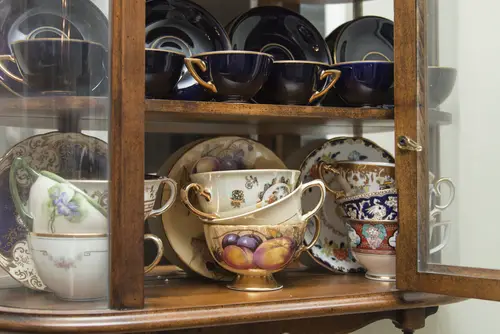
Curio cabinets were all about showing off collections of figurines, knickknacks, or souvenirs. In the 90s, they felt elegant, but as minimalism took over, they felt cluttered and fussy. Many ended up in yard sales or basements. Few people wanted to deal with their delicate glass.
Today, collectors are snapping them up again. Curio cabinets are seen as vintage display cases for modern art or collectibles. Their craftsmanship and glass detailing are hard to find new. What once looked like “grandma furniture” is now desirable vintage décor.
2. Waterbeds
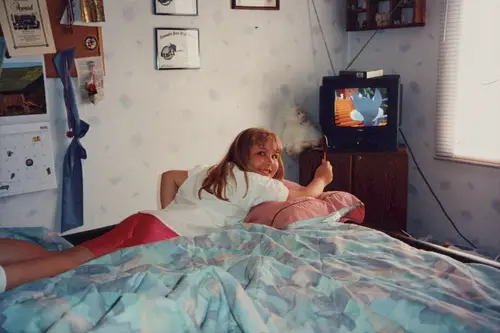
Waterbeds were the ultimate status symbol in the late 80s and early 90s. They promised comfort, a bit of luxury, and sometimes even a heater for winter nights. But they leaked, broke easily, and were a nightmare to move. By the mid-90s, most people had sworn them off.
Fast forward, and intact vintage waterbeds have become collector’s items. Certain models, especially those with wooden frames or mirrored headboards, sell for thousands. Nostalgia drives their appeal as much as rarity. They’re impractical, but that’s part of the charm now.
3. Rattan and Wicker Sets
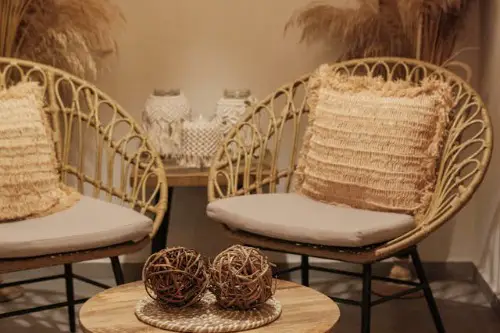
Rattan and wicker furniture had a moment in the 90s, especially in sunrooms and patios. At the time, many people considered them “cheap outdoor furniture.” When trends shifted toward sleeker lines and metals, they fell out of favor. Plenty of sets were dumped or donated.
Now, vintage rattan and wicker is in high demand. Designers love their natural textures and boho vibe, especially for indoor spaces. Authentic pieces from the 70s and 90s sell for big money. What once screamed “grandma’s porch” now shows up in glossy design magazines.
4. Futons
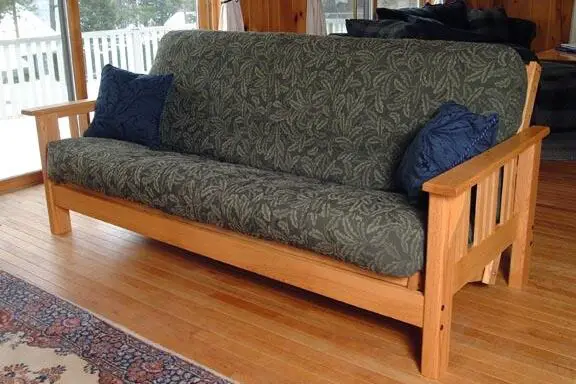
Futons were the go-to for small apartments, first homes, and anyone on a budget in the 90s. They were practical but rarely stylish, and after a few years, they sagged and squeaked. Many ended up on the curb once people upgraded to real couches or beds. They weren’t seen as items worth saving.
Today, retro futons with wooden frames and minimalist lines have found new fans. Mid-century-inspired designs from the 90s can fetch a premium. They’re viewed as versatile, sustainable pieces rather than temporary fixes. A well-preserved futon is now considered a design statement.
5. Inflatable Chairs
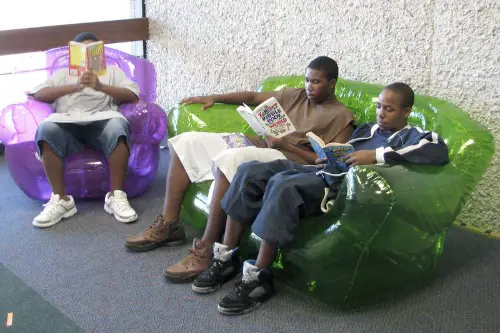
Few things screamed 90s teen bedroom like a neon inflatable chair. They were fun, cheap, and often popped after a few weeks of enthusiastic use. Parents were glad to see them gone, and kids quickly moved on. For years, they were written off as a novelty.
Collectors now hunt for unopened inflatable chairs, especially in funky colors or branded editions. Original ones from companies like Bubble Furniture can cost a surprising amount. They tap into a very specific kind of 90s nostalgia. It’s a quirky comeback, but a profitable one for sellers.
6. Oak Entertainment Centers
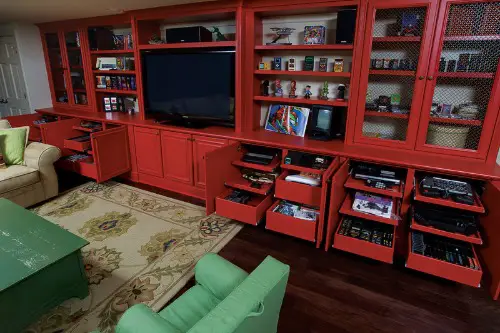
In the 90s, a massive oak entertainment center was the centerpiece of many living rooms. It had space for the boxy TV, VCR, and stacks of VHS tapes. But once flat-screen TVs came along, these bulky pieces seemed outdated overnight. They were often too heavy and large to even donate.
Today, vintage entertainment centers are being repurposed in creative ways. Some buyers turn them into wardrobes, craft stations, or kitchen pantries. Designers look for solid oak construction that’s hard to find new. The very bulk that doomed them now makes them desirable as sturdy, versatile storage.
7. Glass Block Tables
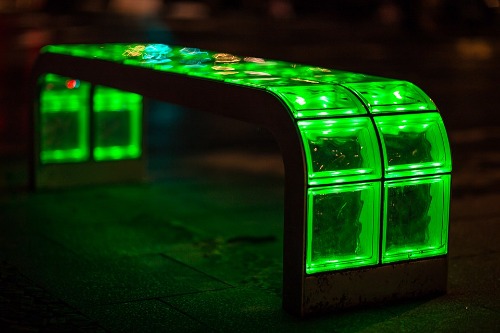
Glass block furniture was a quirky trend in the 80s and 90s. People stacked heavy glass blocks to make tables, desks, or even headboards. They were cheap, creative, and often left behind in moves. Most ended up in thrift stores or dumpsters.
Now, glass block designs are having a resurgence. Designers use them for a sleek, industrial aesthetic. Vintage DIY glass block tables are surprisingly pricey on resale sites. It’s a perfect example of “ugly then, chic now.”
8. Papasan Chairs
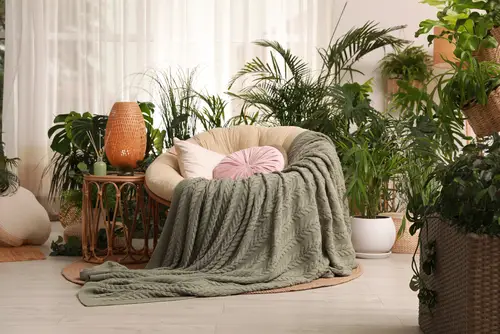
Papasan chairs were everywhere in the 90s, especially in college apartments. They were cozy but often took up too much space. Many broke easily, and once the cushion flattened, they lost their appeal. They didn’t exactly scream “grown-up furniture.”
Now, authentic vintage papasans with sturdy rattan frames are valuable. Collectors and designers prize them for their sculptural look. Paired with modern fabrics, they’ve become trendy again. A well-preserved one can easily sell for several hundred dollars.
9. Roll-Top Desks
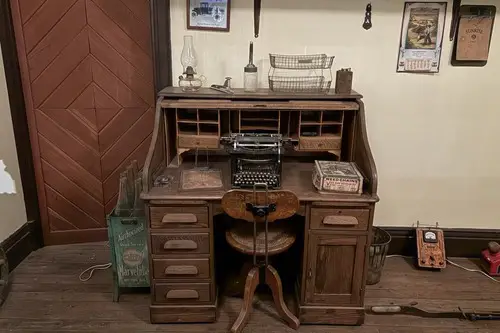
Roll-top desks had a long history before peaking in popularity again in the late 80s and 90s. Families loved them for their storage and traditional look. But as computers became common, the small compartments felt impractical. They quickly looked dated and clunky.
Now, antique and even 90s-era roll-top desks command high prices. The craftsmanship and nostalgic charm make them collectible. Many people repurpose them for laptops or as accent pieces. What was once a hand-me-down is now a showpiece.
10. Dining Hutches
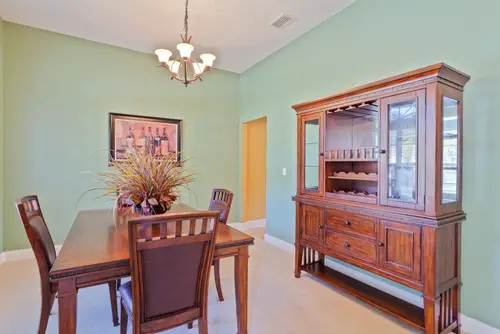
In the 90s, many homes had giant wooden hutches to display china or store serving ware. They were bulky, formal, and fell out of favor as open-concept living became popular. Younger generations didn’t want them, so they were donated or tossed. They seemed destined to disappear.
Instead, hutches are making a big comeback. Vintage oak or cherry versions are valuable for their craftsmanship. Designers use them as statement storage pieces in kitchens or even living rooms. The demand has pushed resale values way up.
11. Bean Bag Chairs
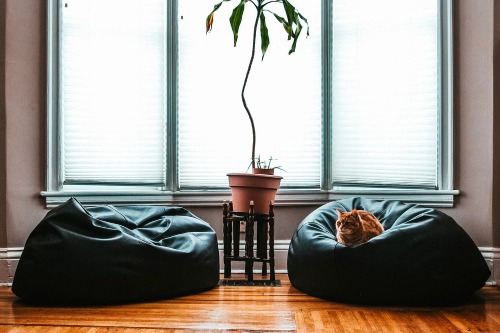
Back in the 90s, bean bag chairs were everywhere, from dorm rooms to basement hangouts. They were cheap, a little tacky, and often deflated into sad lumps after too much use. Many people tossed them out once they grew up and wanted more “adult” furniture.
Today, vintage leather or designer bean bag chairs are surprisingly expensive. Collectors and nostalgic buyers pay top dollar for rare mid-century styles and well-preserved versions. Brands like Sacco or original Fatboy bags have a strong resale market. What was once a teen’s gaming perch can now cost hundreds.
12. Metal Bed Frames
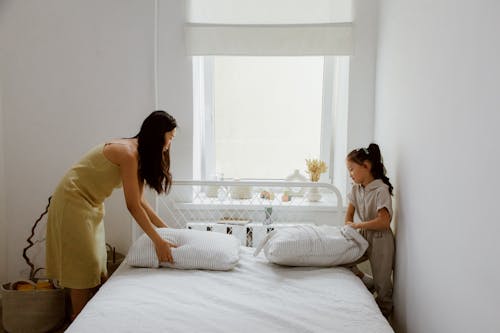
In the 90s, simple metal bed frames—often painted black or white—were incredibly popular. They were affordable, light, and easy to assemble. But as trends shifted toward upholstered or wooden beds, they looked too plain. Many people gave them up for bulkier, more “modern” beds.
Now, vintage wrought iron or painted metal frames can fetch a lot. Their minimalist lines fit perfectly with current design trends. Some brands are especially collectible if the detailing is intact. A frame once sold at a discount store might now be a prized piece.
13. Sectional Sofas
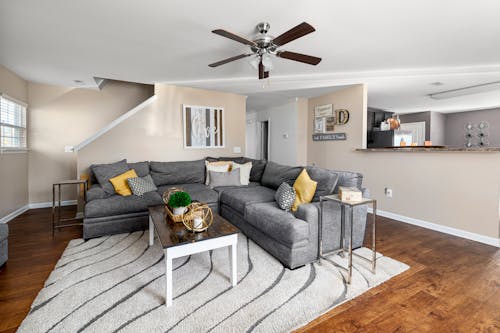
Oversized sectional sofas were living room staples in the 90s. Many were upholstered in microfiber or floral fabrics that didn’t age well. As trends shifted to smaller, sleeker furniture, sectionals were abandoned. They often ended up in basements or garages.
Today, vintage sectionals—especially modular ones—are expensive. Designers love their adaptability and comfort. Rare versions from high-end 90s brands can cost thousands. What was once considered a bulky eyesore is now a luxury find.
14. TV Trays
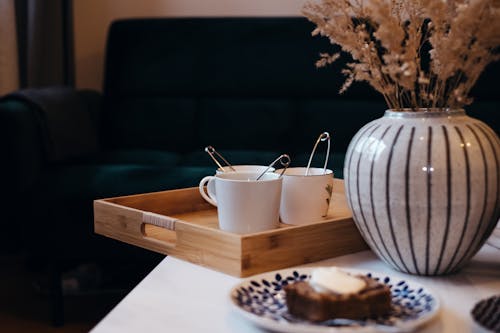
In the 90s, folding TV trays were found in just about every household. They were lightweight, often made of wood or metal, and perfect for casual meals in front of the television. But as dining habits and home décor shifted, they came to be seen as tacky or disposable. Many families tossed them out during decluttering sprees.
Now, vintage TV tray sets are surprisingly collectible. Retro designs with floral prints, faux wood, or pop culture themes are especially valuable. Sets in good condition can fetch hundreds, particularly if they come with their original storage stands. What was once a symbol of lazy dinners is now a retro-chic accent piece.
15. Canopy Beds
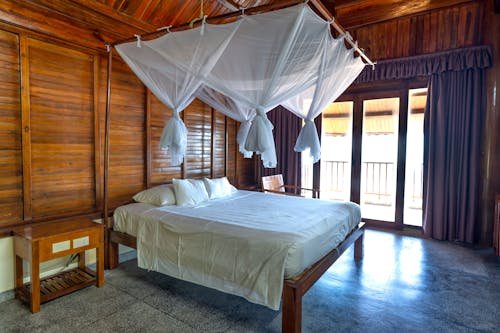
In the 90s, canopy beds with ornate metal frames or frilly fabric were a teenage dream. They added a sense of romance and whimsy to bedrooms but often took up too much space. As tastes shifted toward minimalism, many were dismantled or donated. They became outdated almost overnight.
Today, vintage canopy beds are sought after for their statement-making look. Collectors and designers value their architectural frames and nostalgic charm. With the right styling, they fit perfectly into eclectic or boho interiors. A once-dismissed “princess bed” can now command impressive prices.
16. Lava Lamps
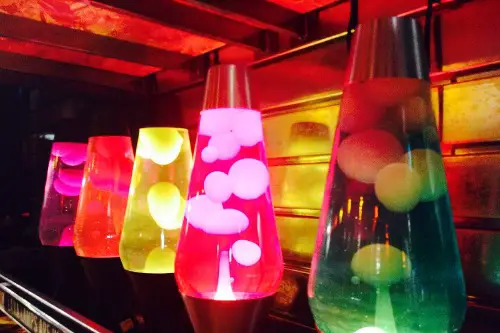
Lava lamps were the ultimate mood lighting accessory in the 90s. They glowed in dorms, bedrooms, and game rooms, but many people found them impractical and dated. Once the novelty wore off, they often ended up at thrift stores or garage sales. By the late 90s, they were considered kitschy clutter.
Fast forward, and authentic vintage lava lamps are in demand. Certain rare colors or original designs can sell for a small fortune. Collectors love the psychedelic, retro vibe that newer versions fail to capture. What was once a throwaway dorm accessory is now a design collectible.
17. Corner Cabinets
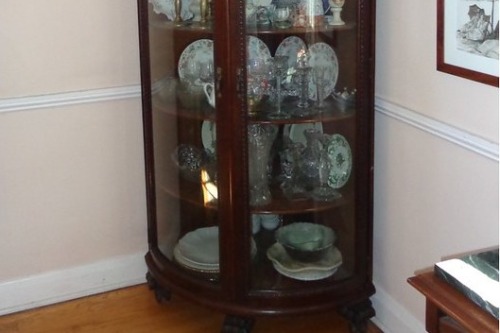
Corner cabinets were popular storage solutions in 90s dining and living rooms. They made use of awkward spaces, often holding glassware, knickknacks, or family heirlooms. But their old-fashioned look quickly fell out of favor. Many were discarded as bulky and outdated.
Now, vintage corner cabinets are considered charming and practical again. Their solid wood craftsmanship appeals to collectors and decorators. Restored versions are especially prized for blending storage with style. What used to feel like a space-filler is now a coveted furniture statement.
18. Folding Room Dividers
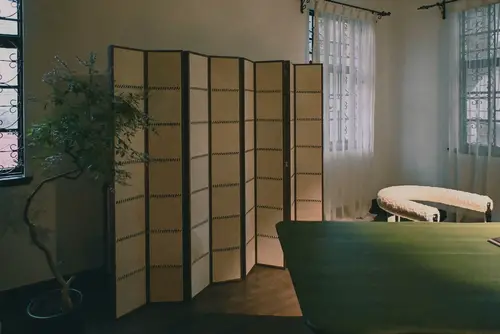
In the 90s, folding room dividers with fabric panels or rattan designs were trendy in apartments and dorms. They were cheap, portable, and often used to carve out makeshift spaces. But they quickly lost their appeal as “real” walls and open concepts took over. Most ended up in storage or the trash.
Today, vintage folding screens are fashionable again. Designers use them as decorative accents, headboards, or privacy solutions in modern lofts. Hand-painted or intricately carved versions can bring in serious money. What once looked like flimsy décor is now high-end retro chic.
19. Nesting Tables
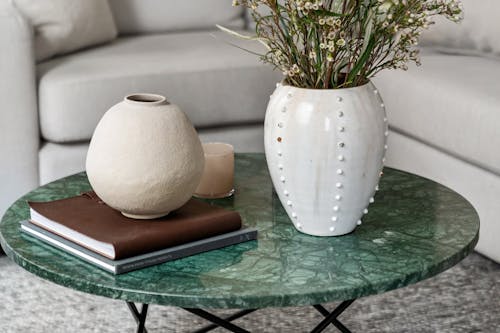
Nesting tables were practical 90s staples, especially in small living rooms. They stacked neatly together, making them easy to store, but many were cheaply made from laminate or veneer. As sturdier and trendier coffee tables came into style, nesting tables were discarded. They weren’t seen as valuable at all.
Now, vintage nesting tables are back in demand. Mid-century or 90s wooden versions can sell for high prices. Collectors appreciate their versatility and space-saving design. A forgotten set of nesting tables is now a sought-after vintage score.
20. Magazine Racks
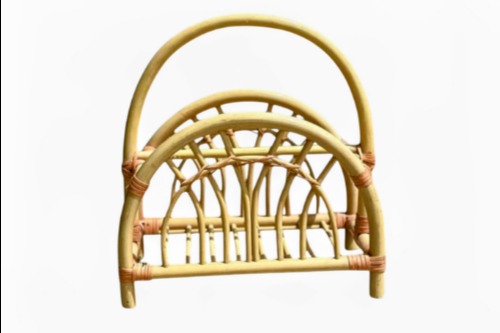
Magazine racks were common in the 90s, often placed beside couches or recliners. They held stacks of magazines and newspapers but became unnecessary as digital media took over. Plastic and wicker versions were especially quick to be tossed. They became clutter instead of décor.
These days, vintage magazine racks are surprisingly desirable. Wooden or wrought iron versions in good shape are seen as stylish retro storage. They’re used not just for magazines but also for vinyl records or books. What was once clutter control is now a collectible accent piece.
21. Sleeper Sofas
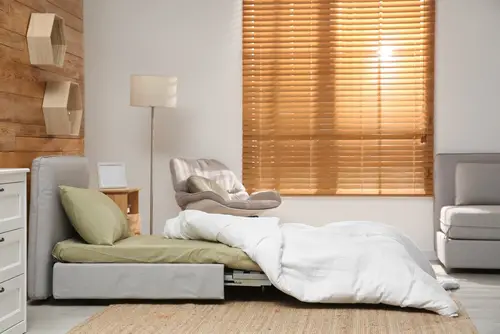
Sleeper sofas were essential in 90s homes for hosting overnight guests. They were practical, but the mattresses were thin, and the mechanisms were heavy and hard to move. Over time, they became uncomfortable and fell out of favor. Many ended up left behind during moves.
Now, well-made 90s sleeper sofas are being reappraised. Collectors and decorators value their dual functionality and retro style. High-quality versions, especially from name brands, can bring in impressive resale prices. What was once just a spare bed is now a vintage luxury.
This post 21 Furniture Pieces Everyone Tossed in the 90s That Are Now Expensive was first published on Greenhouse Black.
